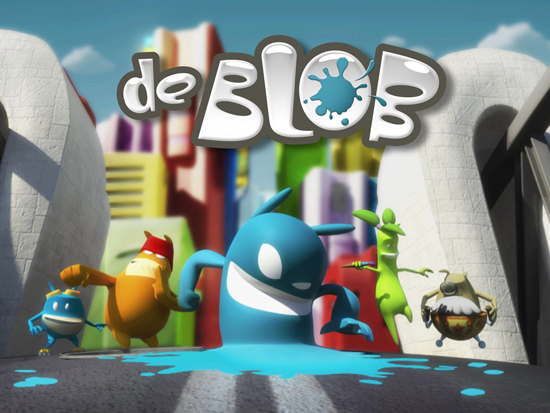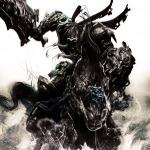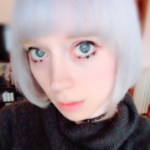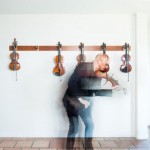de Blob has definitely been one of my most anticipated games since E3 and Comic Con this year. The live jazz soundtrack for is an absolute joy to listen to, and the interactivity that developer Blue Tongue Entertainment has worked into the game makes for some of the most fun I’ve had with music in a game in a long time.
We’ve been fortunate enough to get some time with John Guscott, the in-house composer senior audio designer at Blue Tongue Entertainment in Australia. His specific role on de Blob was composer and producer of the music in the game, all of which was recorded live by approximately 22 sesssion artists. We also discover that there will be a promotional soundtrack given to gamers who pick the game up at Circuit City, so I highly recommend getting it there if at all possible.
Find out once and for all of de Blob draws inspiration from City Connection on the NES after the jump.
OSV: Hello John. It’s great to be speaking with you about the amazing music in de Blob. We recently had the pleasure of seeing and hearing de Blob in action at both E3 and Comic Con, and we are huge fans of the game’s audio. For what started off as a homebrew project, how did the game’s audio progress through the development cycle of de Blob?
Guscott: Thanks very much! The original Blob (created by students at the Utrecht School of the Arts) was a charming game for Windows but once THQ began work on a full console version for the Nintendo Wii, we started from the ground up as far as audio is concerned. Because all of the music and sound for the game was created in-house, the audio department was able to maintain a very close working relationship with the other disciplines of game development such as design, code, art and animation. This was especially important in de Blob because as early development and design progressed, it became apparent that the audio would be intrinsically linked to other aspects of the game, in terms of what is going on visually and in the gameplay .
OSV: A number of session artists were brought in to record the score. How did this collaboration between these musicians and Blue Tongue come about?
Guscott: Early on in the game’s development, I decided I wanted to use live players on the game’s soundtrack. You simply can’t beat the feel and groove of real musicians recording live, as opposed to using programmed drums and sequenced parts. Luckily, the producer on the project got behind the idea from the start. Here in Melbourne, Australia, we are blessed with a great live music scene and I was aware of certain musicians active on the scene who I knew would be perfect for the job. Thankfully, almost all my first choice players were available and interested.
OSV: At the beginning of each stage, players can choose their “mood,” which dictates which song will be heard in that stage. What considerations went into giving the player the control of the music? Was it difficult for the band to create music that was suitable for any of the game’s stages, or they simply asked to create music that matched the given “mood?”
Guscott: Actually, the whole mood concept came later on, after the music had been written and recorded. However, the idea came from a feature that we included very early on in the development cycle. I was adamant that when starting a game, the player should to be able to select any music track that they had previously unlocked in the game’s single player levels. This helps the re-play factor of the levels as the whole Blob experience is quite different, depending on which music track is playing. Rather than the player simply selecting a track to play, we decided to link the Blob’s mood with the music. In doing this, we were able to further integrate the music into the interactive world of de Blob, highlighting the fact that to a certain extent, the Blob IS the music, in as much as everything he does and touches has a musical re-percussion.
OSV: Is all the music in the game recorded live? How many performers are featured on the soundtrack, and what instruments were recorded?
Guscott: Yes all of the music was recorded with live players in a traditional recording studio. The crux of the ensemble is built around a rhythm section comprising of drums, percussion, bass, electric guitar, and keyboards (usually Hammond organ or Fender Rhodes electric piano). A three piece horn section was then recorded on top. Other, more unusual instruments were also used for some pieces including sousaphone, cuica (a Brazilian friction drum) and clarinet. At last count, a total of 22 musicians appeared on the sessions!
OSV: Color-specific sound effects are cued every time players paint an object in the game. Were all these sounds, which include electric guitars and brassy synths recorded live as well?
Guscott: Yes, the ‘colour riffs’ were recorded live and then edited into colour-specific sound banks for the game to play at run time (no small task as each musical piece contains approximately 200 to 250 colour riffs which are randomized to help reduce repetition). Additionally, ‘musical sound effects’ were produced. These play when certain tasks are completed, for example, when the player has successfully completed a challenge set by one of the colour revolutionaries. These tend to be synthetic and were produced in Cubase using synths.
OSV: Tell us about the technology behind the audio in de Blob. It seems very complicated as layers are constantly being added and removed from the mix on the fly as players interact with their environment. Was there any precedent for the particular system used in de Blob, or was the system built from the ground up?
Guscott: The interactive music system used in de Blob was built from the ground up. We had a prototype very early on which demonstrated the key concepts, ie, different instruments being linked to different colours, combined with the intensity of the music increasing as colour is restored to the environment. As time progressed, we were able to build more exciting features into the system, such as the game knowing what particular part of the chord progression the current tune is on, and the shaker / percussion sounds that play when the player vigorously shakes the Wii-mote and Nunchuck controllers when transforming a landmark. We had great support from the programming team who were able to provide some decent music tools written especially for this game.
OSV: I’ve been told we will see a promotional soundtrack release for de Blob. What can you tell us about this album? Will it be released in the United States as a pre-order bonus?
Guscott: Yes we have produced a soundtrack album, especially re-mixed and mastered for CD release. It will be bundled with the game as a pre-order bonus in the US when purchased from certain stores. [Editor’s Note: We have confirmation that the soundtrack will be given away to customers who purchase the game at Circuit City].
OSV: How many minutes of music were recorded for the game? Will it all be featured on the soundtrack?
Guscott: Due to the interactive nature of the music, it is very difficult to quantify exactly how many minutes of music there is in the game. If all the musical material was laid out in linear fashion on a time line, then there would be hours of content. The soundtrack album is interesting because, although the music stands up well to isolated listening away from the game, all of the interactivity is obviously lost. Therefore, the tunes on the soundtrack album are basically snapshots of particular states of the music within the game at a given time. In nearly all cases, the version that you hear on the soundtrack CD is the music at its most upbeat and colourful. There was not enough space on a single album to include all the music tracks so some had to be left off but we feel there is a healthy selection on there!
OSV: Please take it as a compliment when I say de Blob immediately reminded me of Namco’s Katamari Damacy franchise in terms of the quirky visuals and the “rolling” gameplay mechanic. Was any inspiration drawn from these titles and their equally impressive soundtracks?
Guscott: As game developers, we always need to be aware of what else it out there and many of the guys on the team are fans of the Katamari series simply because they’re such good fun to play. As far as the soundtrack is concerned, we wanted to do something different to many other games by making the music totally interactive.
OSV: Has anyone on the team ever played City Connection by Jaleco on the classic NES? The goal of the game was to paint all the roads in the game white by driving over them with what I think was supposed to be oil, while police cars and cats acted as obstacles. This must have been the inspiration for de Blob, right? The music was admittedly good.
Guscott: The team here at Blue Tongue initially inherited the painting concept of the game from the Utrecht School of the Arts students who developed the original Blob demo. I don’t believe the design team at Blue Tongue was influenced by City Connection but maybe I’ll check it out!
OSV: What does de Blob mean to the music staff and band members who worked on it? Describe your experience and perhaps your most memorable moment working on the game.
Guscott: Overall, de Blob was an absolute blast to work on from a musical perspective. It was fantastic to work with some very talented musicians and engineers. I can think of two really memorable moments that stood out. The first was on day 1 of the first wave of recording sessions. I had produced demos of all the music tracks and created notated charts of all the musical parts for the musicians to play. As the guys rolled into Take 1 of the first tune I knew that we had made the right production decision as the music coming through those studio monitors (which I had previously heard in a sequenced, demo form) simply jumped to life. The second great moment was when I finally had the first tune fully implemented into the game. The musical implementation process was long and painstaking but when it finally worked as it should, with all the colour riffs and musical sound effects hooked up, I thought “we’re onto something” and set the benchmark for the rest of the tunes.










































[…] Full interview here […]
[…] Full interview here […]
[…] This post was mentioned on Twitter by hands on sound, lostchocolatelab. lostchocolatelab said: de Blob Audio Interview: John Guscott: http://bit.ly/fHOfZM #gameaudio #gamemusic […]